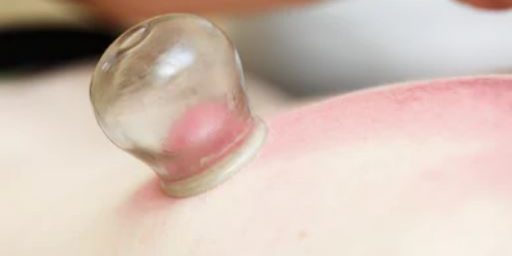Nicole ClarkAugust 24, 2016
Is Old the New “New?”
An estimated 4.5 million Americans visit the emergency room or doctor’s office because of an adverse reaction to medication, and an additional 2 million individuals already hospitalized experience an adverse drug response. This statistic resonates with many people, therefore in Western society there is a movement away from medications and invasive procedures to relieve pain and restore function. Complimentary/alternative medicine (CAM) treatments are increasing in popularity. In fact, at the recent 2016 Olympics in Rio, many athletes were seen with cupping marks.
I fully support this movement for multiple reasons. First, medications have side effects and often the long-term effects of these drugs are unknown. Second, it often treats the symptoms but not the root cause of the problem. If your ailment has many symptoms this can lead to poly-pharmacy, which can be extremely dangerous, even life-threatening. And finally, invasive procedures come with many serious risks and should be a last resort whenever possible.
I want to introduce two of the many different types of CAM: gua sha and cupping. There are some commonalities between the two treatments in that both are intended to balance qi, or the flow of energy through the body, increase blood flow and improve lymphatic drainage, however they require different equipment and are performed differently.
What is Gua Sha?
The first recorded use of gua sha for medical treatment dates back nearly 2,000 years in China. “Gua” means scrape, and “sha” means rash. It is a firm, unidirectional pressure stroke to an area on the body using a blunt tool. Gua sha has been used to treat many different types of medical problems, such as pain, nausea, coughing, limited range of motion, and fever. After a successful treatment you will see petechiae, which to the casual observer looks like a bruise or a rash, but is merely the rupture of tiny capillaries which cause red blood cells to rush to the surface tissues. This is different from bruising, which is caused by profound injury and traumatic bleeding.
What is Cupping?
Cupping is a technique in which a vacuum is created within a cup using heat or suction, and the cup is placed on a patient’s skin; this breaks up adhesions that are blocking the flow of qi and nutrients to different parts of the body. Cupping can stimulate lymphatic and blood flow to an area to remove toxins and facilitate healing. It can be used to treat muscle aches, pains, stress, respiratory diseases, high blood pressure, and much more. The cups can be left in place for the whole treatment, or with the aid of a lubricant on the skin you can glide the cup around to treat a broader area. Some are intimidated by the circular marks it leaves behind, they are painless and normally take less than one week to disappear.
The Research Says…
Much of the research on gua sha, cupping and other alternative treatments has been done in the past 5-10 years. Earlier research had poor methodology and can’t be used as valid evidence for or against treatment. A meta-analysis is a research method that looks at many studies and compiles all of the results to reach a broader conclusion. More subjects means more variability, and this means better information.
In their meta-analysis Yuan and colleagues looked at 10 different types of CAM and found that cupping is more effective than a “wait and see” or a “standard medical care” approach and gua sha had a mild positive impact on neck and back pain. A study from Harvard in 2011 showed a decrease in liver inflammation from active Hepatitis B after gua sha treatment.
Another study showed better outcomes in pain and disability after just one treatment of gua sha when compared with hot pack application of the same duration. Measurements were taken immediately after treatment and 7 days later, and both measures showed greater benefit in the gua sha group. This was a relatively small study, but it used questionnaires that have been proven reliable and valid.
Which One is Better?
The answer to this question is not so simple. Both treatments are performed to relieve stagnation of qi. I find both techniques to serve as a diagnostic tool and a treatment based on how the tissue responds. Research has not compared the two techniques against each other so far, so the choice becomes subjective.
Of the two techniques I choose gua sha most often. I feel I have more control with gua sha and can adjust the treatment intensity based on how the patient responds. If the patient has a large area that needs to be treated I find I can do it more efficiently with gua sha. I also prefer the versatility of gua sha in that it can be done on smaller body parts or where the soft tissue is not so elastic, i.e. the palm of the hand and fingers.
My Professional Opinion
More studies need to be done on the long-term effects or benefits of gua sha and cupping, but the research is promising for short-term relief. Anyone with chronic pain can tell you how life-changing seven days of relief can be, even if the person isn’t pain-free. While more research is being conducted, these treatments should be used as a component of a comprehensive treatment program.







